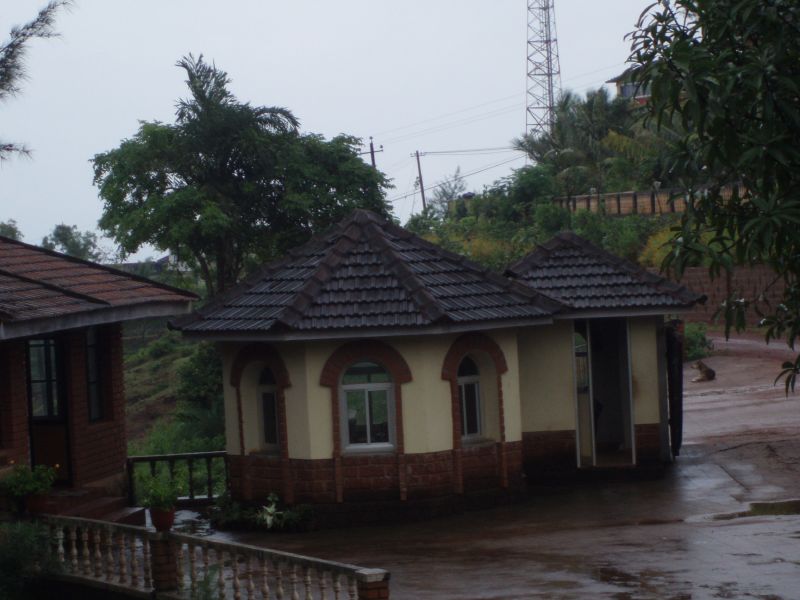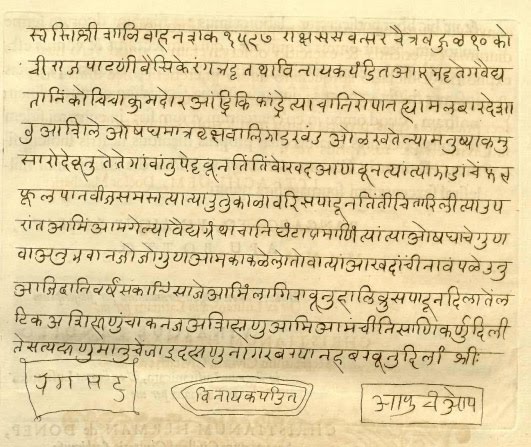|
Chitrapur Saraswat Brahmins
Chitrapur Saraswats are a small Konkani-speaking community of Hindu Brahmins in India. They are traditionally found along the Kanara coast and call themselves ''Bhanaps'' in the Konkani language. This is a small community from India spread the world over. They have taken names of villages in Karnataka as surnames. So, their recent history is associated with the State of Karnataka. But some researchers like Bertrand Renaud and Frank Conlon believe they migrated from the banks of River Saraswati in north India. The estimated population of this community is roughly 25,000. The community members refer to themselves as "Bhanaps". The community also has a magazine published every month called ''Kanara Saraswat'' from Mumbai which carries articles by members and other news concerning the community. Origin Historian Susan Bayly states that the Ramanandis, who opened up to almost any background were responsible for "Brahmanising" groups of unclear status and Chitrapur Saraswats are on ... [...More Info...] [...Related Items...] OR: [Wikipedia] [Google] [Baidu] |
Konkani Language
Konkani () is an Indo-Aryan language spoken by the Konkani people, primarily in the Konkan region, along the western coast of India. It is one of the 22 scheduled languages mentioned in the Indian Constitution, and the official language of the Indian state of Goa. It is a minority language in Karnataka, Maharashtra, Kerala, Gujarat & Damaon, Diu & Silvassa. Konkani is a member of the Southern Indo-Aryan language group. It retains elements of Vedic structures and shows similarities with both Western and Eastern Indo-Aryan languages. The first Konkani inscription is dated 1187 A.D. There are many Konkani dialects spoken along and beyond the Konkan region, from Damaon in the north to Carwar in the south, most of which are only partially and mutually intelligible with one another due to a lack of linguistic contact and exchanges with the standard and principal forms of Konkani. It is also spoken by migrants outside of the Konkan proper; in Surat, Cochin, Mangalore, Ahmedabad, ... [...More Info...] [...Related Items...] OR: [Wikipedia] [Google] [Baidu] |
Constitution Of India
The Constitution of India (IAST: ) is the supreme law of India. The document lays down the framework that demarcates fundamental political code, structure, procedures, powers, and duties of government institutions and sets out fundamental rights, directive principles, and the duties of citizens. It is the longest written national constitution in the world. It imparts constitutional supremacy (not parliamentary supremacy, since it was created by a constituent assembly rather than Parliament) and was adopted by its people with a declaration in its preamble. Parliament cannot override the constitution. It was adopted by the Constituent Assembly of India on 26 November 1949 and became effective on 26 January 1950. The constitution replaced the Government of India Act 1935 as the country's fundamental governing document, and the Dominion of India became the Republic of India. To ensure constitutional autochthony, its framers repealed prior acts of the British parliament in A ... [...More Info...] [...Related Items...] OR: [Wikipedia] [Google] [Baidu] |
Mangalorean Society
Mangaloreans ( Tulu: ''Kudladaklu''; Kannada: ''Mangaloorinavaruu''; Konkani: ''Kodialkar''; Beary: ''Maikaltanga''; Urdu: ''Kaudalvale'') are a collection of diverse ethnic groups that hail from the historical locales of South Canara (Tulunaad) on the south western coast of Karnataka, India, particularly the residents native to Mangaluru. History Classical history According to the works of Sangam literature (300 BCE - 300 CE), Tulu Nadu was one of the 12 socio-geographical regions included in the ancient Tamilakam. Tulu Nadu must certainly at one time have formed part of ancient Kerala ( Chera dynasty), where the western coastal dialect of Old Tamil was spoken. It must have separated from Tamilakam sometime between 300 CE and 500 CE, when the Kadambas invaded the northern portions of Chera kingdom. No definite historical record relating to Tulu Nadu, other than those were found from Sangam literature, have been found of earlier date than 8th or 9th century CE. Emergence o ... [...More Info...] [...Related Items...] OR: [Wikipedia] [Google] [Baidu] |
Saraswat Cuisine
Konkani cuisine is the cuisine of the Saraswat Brahmins from the Konkan region on the western coast of India. Konkani cuisine differs within the Saraswat Brahmin subsects and within the Konkan-Canara region. Konkani cuisine originally hails from the Konkan region including Uttara Kannada, Udupi district, Dakshina Kannada, Damaon, and Goa, India. Konkani cuisine is popular served in many restaurants throughout the western coast of India, and especially in the cities of Bombay and Bangalore. Each variation has its unique flavour and makes uses of different vegetables and fruits available in the region. Konkani cuisine is usually pesco-vegetarian, except ''acharyas'' and ''purohits'' who follow a strictly saatvik vegetarian diet. According the Konkani folklore, fish, meats are regarded as sea vegetables. Historically, they have refrained from eating any terrestrial animals in general. Lacto-vegetarian Saraswat cuisine Their curries use a lot of coconut, coconut oil, tamarind, k ... [...More Info...] [...Related Items...] OR: [Wikipedia] [Google] [Baidu] |
Canara Konkani
Canarese Konkani are a set of dialects spoken by minority Konkani people of the Canara sub-region of Karnataka, and also in Kassergode of Kerala that was part of South Canara.The Constitution Act 1992 (71st Amendment) Kanarese script is the primary mode of writing used in Carnatacan Konkani, as recognised by the Konkani Academy. Names The Karnataka Saraswat dialects are referred to as Canara Konkani. The Kerala dialects are referred to as Travancore Konkani or Kerala Konkani. Certain dialects like the Canara Saraswat dialects of the Gaud Saraswats and Bhanaps are called आमचीगॆलॆं ''āmcigelẽ'' (lit. ours) and the dialect of the Cochin Gaud Saraswats is called कॊच्चिमांय ''koccimā̃y'' (lit. mother Cochin) by the members of those communities. The word ''Canara'' is a Portuguese rendering of the word ''Kannada''. The early Portuguese conquistadors referred to Konkani as ''lingoa Canarim'' as a reference to Canara. Geographic distributio ... [...More Info...] [...Related Items...] OR: [Wikipedia] [Google] [Baidu] |
Kannada
Kannada (; ಕನ್ನಡ, ), originally romanised Canarese, is a Dravidian language spoken predominantly by the people of Karnataka in southwestern India, with minorities in all neighbouring states. It has around 47 million native speakers, and was additionally a second or third language for around 13 million non-native speakers in Karnataka. Kannada was the court language of some of the most powerful dynasties of south and central India, namely the Kadambas, Chalukyas, Rashtrakutas, Yadava Dynasty or Seunas, Western Ganga dynasty, Wodeyars of Mysore, Nayakas of Keladi Hoysalas and the Vijayanagara empire. The official and administrative language of the state of Karnataka, it also has scheduled status in India and has been included among the country's designated classical languages.Kuiper (2011), p. 74R Zydenbos in Cushman S, Cavanagh C, Ramazani J, Rouzer P, ''The Princeton Encyclopedia of Poetry and Poetics: Fourth Edition'', p. 767, Princeton Unive ... [...More Info...] [...Related Items...] OR: [Wikipedia] [Google] [Baidu] |
Girish Karnad
Girish Karnad (19 May 1938 – 10 June 2019) was an Indian actor, film director, Kannada writer, playwright and a Jnanpith awardee, who predominantly worked in South Indian cinema and Bollywood. His rise as a playwright in the 1960s marked the coming of age of modern Indian playwriting in Kannada, just as Badal Sarkar did in Bengali, Vijay Tendulkar in Marathi, and Mohan Rakesh in Hindi. He was a recipient of the 1998 Jnanpith Award, the highest literary honour conferred in India. For four decades Karnad composed plays, often using history and mythology to tackle contemporary issues. He translated his plays into English and received acclaim. His plays have been translated into some Indian languages and directed by directors like Ebrahim Alkazi, B. V. Karanth, Alyque Padamsee, Prasanna, Arvind Gaur, Satyadev Dubey, Vijaya Mehta, Shyamanand Jalan, Amal Allanaa and Zafer Mohiuddin. He was active in the world of Indian cinema working as an actor, director and screenwriter, in Hind ... [...More Info...] [...Related Items...] OR: [Wikipedia] [Google] [Baidu] |
Karnad Sadashiva Rao
Karnad Sadashiva Rao was an Indian freedom fighter from what is now Karnataka, India. Rao was born to a wealthy south Indian family in 1881. He studied at Presidency College in Madras and also studied law in Mumbai. Rao became involved in the Indian independence movement. He founded Mahila Sabha to help widows and poor women. By 1919, he was fully involved in the Indian independence movement, being one of the first from what is now Karnataka to volunteer for Gandhi's Satyagraha movement. He was also one of the key members of the Congress Party and was responsible for expanding the party in what is now Karnataka. Rao spent all of his wealth in service of the independence movement and for helping the poor. He attended the Faizpur Congress Session in December 1936. A penniless Sadashiva Rao stayed in a leaky hut, and caught cold and fever. Despite this, Rao travelled to Mumbai without telling anyone of his condition. He died shortly afterwards on 9 January 1937. Rao died with ... [...More Info...] [...Related Items...] OR: [Wikipedia] [Google] [Baidu] |
Guru Dutt
Vasanth Kumar Shivashankar Padukone (9 July 1925 – 10 October 1964), better known as Guru Dutt, was an Indian film director, producer, actor, choreographer, and writer.Rajadhyaksha, Ashish, and Paul Willemen. 9941998''Encyclopedia of Indian Cinema''. London: British Film Institute Publishing. He is regarded as one of the greatest filmmakers of Indian cinema. Dutt was lauded for his artistry, notably his usage of close-up shots, lighting, and depictions of melancholia. He directed a total of 8 Hindi films, several of which have gained a cult following internationally. This includes '' Pyaasa'' (1957), which made its way onto ''Time'' magazine's 100 Greatest Movies list, as well as ''Kaagaz Ke Phool'' (1959), ''Chaudhvin Ka Chand'' (1960), and '' Sahib Bibi Aur Ghulam'' (1962), all of which are frequently listed among the greatest films in Hindi cinema. He was included among CNN's "Top 25 Asian Actors" in 2012. Early life Vasanth Kumar Shivashankar Padukone was born on 9 ... [...More Info...] [...Related Items...] OR: [Wikipedia] [Google] [Baidu] |
Narayan Ganesh Chandavarkar
Sir Narayan Ganesh Chandavarkar (2 December 1855 – 4 May 1923) was an early Indian National Congress politician and Hindu reformer. He was regarded by some as the "leading Hindu reformer of western India".''Modern Religious Movements in India'' by - Journal of the American Academy of Religion, Vol. 43, No. 2, Book Review Supplement (Jun., 1975), pp. 349-351 Early life Narayan Ganesh Chandavarkar was born in in the |
Ramanandi Sampradaya
The Ramanandi (IAST ), also known as Ramavats (IAST ), are a branch of the Vaishnava Sri Sampradaya of Hinduism. Ramananda sect is the largest sect of Vaishnavas, out of 52 gates of Vaishnavism, 36 are held by Ramanandi's. They mainly emphasize the worship of Rāma, as well as Vishnu directly and also his other incarnations. Caste People of this sect are known as Vaishnavite in Gujarat, Uttar Pradesh, Madhya Pradesh, and Rajasthan. At the beginning of the 20th century, this sect declared to be the descendants of Rāma's sons, Kusha and Lava. Denomination The Ramanandi Sampradaya is one of the largest and most egalitarian Hindu sects India, around the Gangetic Plain, and Nepal today. It mainly emphasizes the worship of Rāma, as well as Vishnu directly and other incarnations. ascetics rely upon meditation and strict ascetic practices, but also believe that the grace of god is required for them to achieve liberation. For that reason, the section of the ascetics, unlike so ... [...More Info...] [...Related Items...] OR: [Wikipedia] [Google] [Baidu] |





